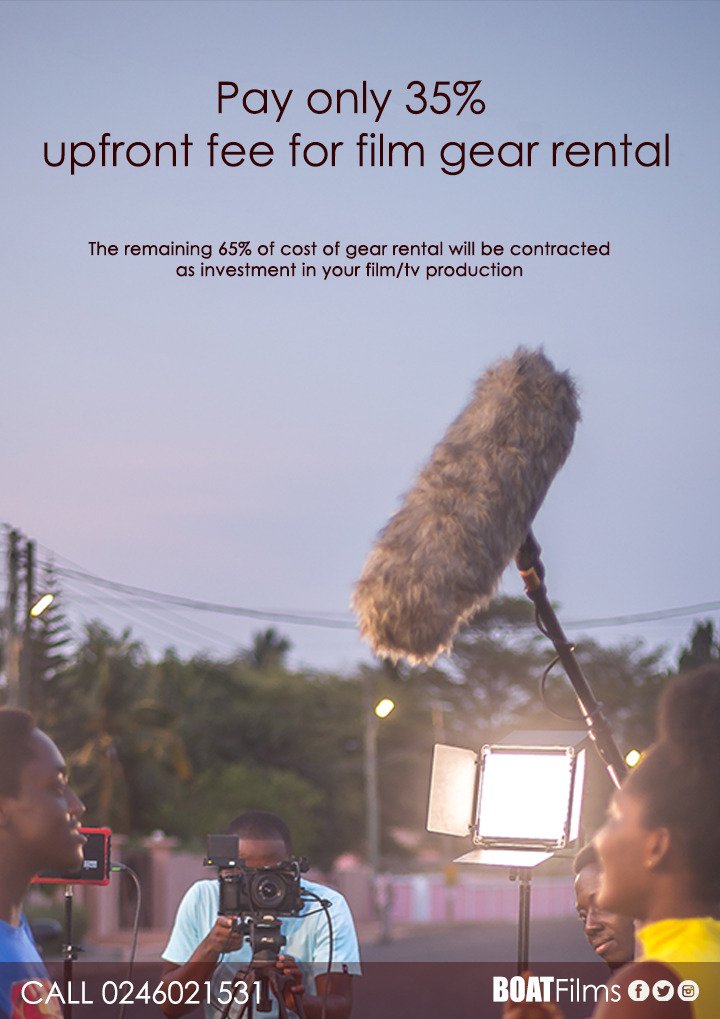News
Cinema as Activism: A Conversation with Bhavana Goparaju, Producer of ‘In The Belly of a Tiger’.
Published
2 years agoon

In the dynamic realm of cinema, where narratives serve as mirrors reflecting societal intricacies, Bhavana Goparaju stands as a beacon of change. With her latest film, “In The Belly of a Tiger,” she ventures into the heartlands of India, not merely with inspiration but with an aspiration—to shatter the normalization of despair and amplify the silenced voices of the marginalized. In this exclusive interview, we delve into Goparaju’s journey, exploring the genesis of her cinematic endeavours and the profound societal messages she endeavours to convey through her artistry.
- Can you share with us the inspiration behind your latest film, “In The Belly of a Tiger,” and what message you aim to convey through it?
Bhavana Goparaju:
It’s more an aspiration than inspiration. Farmer suicides have been increasing in India and been normalized. My intention behind entering filmmaking is to shatter the harmful normalization of downtrodden in our society and amplify the voices that are being shut. The issues we have are not and should not just be a few minutes time slot in the main stream media or attaching a number to the deaths as we have been seeing everywhere whether it’s Covid or genocide in Palestine but they are people as humane as they can be. The difficult part is how we could tell this story as humanely as possible with love. I have always loved the creating the narrative as individualistic and as humane as we could get and tell the story through this character/s. Director Jatla Sidharth has a unique style of filmmaking of integrating of love, fabric of any relation into the story we want to tell and I feel it has a huge impact when we do that. Films I see it as a platform that makes one experience someone else’s story as intimately as possible and so I want to share the story of the people and their lives that moved me so that one could feel, know and act upon. So, with this film it’s about farmers and laborers in rural areas, their intricacies because of the globalization and capitalism that is rapidly growing only for certain section of people leaving behind majority of the population who actually build the nation.
- What drew you to this story, and what challenges did you encounter while bringing it to the screen?
Bhavana Goparaju:
The thought of telling the story of farmer suicides especially drawing the line that life of a tiger is much higher than a farmer/farm labor. We started this project roughly around March 2018. We aimed to shoot in 2020 and the world knows what all happened in 2020. Everything fell off including the investors I brought in. Once the investors backed off everything changed. I also lost my job that actually been supporting me and the film. So, we had to redo the plan and think altogether of what we can do. The only thing that has always been in the plan and continued was getting into as many prestigious script labs and co-production market as we could so that we could aim getting into either Cannes/Berlin/Venice. We continued doing so and I started to heavy lift the promise of making this film on the production side and Siddharth with the creative side with 2 other people pitching in/joining in for production stage of the film which ultimately became a 3 women producer team. This gap in covid also gave us ample amount of time to polish the narrative and opened up many more learning opportunities for both me and Siddharth.
- Your filmmaking journey has transitioned from engineering to cinema. What sparked this transition, and how has your background in science influenced your approach to filmmaking?
Bhavana Goparaju:
I have not completely transitioned. I have always done both. I should say I could survive in general because I could do both. I believe Arts & Science have always been together, completing the understanding of life itself. Arts for me is outlet of my experiences, emotions, thoughts and understanding of it is what science is all about. My scientific temperament added a layer to my artistic temperament. As a Producer, who is making an Independent cinema aiming to focus on voice that power doesn’t want to hear, you need to be very strategical in choosing, placing and making of the movie and I guess that’s where my scientific temperament, lessons from engineering building robots or off road vehicles and also my entrepreneurial skills comes in to not disappoint my artistic side. Hope I answered your question.
- How important is it for you for your films to be rooted socio-historic tropes?
Bhavana Goparaju:
Social history is important to know to understand our present is what I strongly believe in. My films are actually more relevant in present as they are happening in present and is not just history.
- Collaboration seems to be a crucial element in your filmmaking process. How do you ensure alignment of vision within your team, and what do you value most in collaborative efforts?
Bhavana Goparaju:
It’s first and foremost the belief system an individual that totally counts to the alignment of the vision of the film and then the skill set. Knowing not one person has everything to offer and if the person whose belief system matches to the team and the skill set compliments to the existing one like building the puzzle. I would want to layer the team as such.
- Your films seem to often challenge societal norms and advocate for social justice. How do you navigate the balance between artistic expression and social commentary in your work?
Bhavana Goparaju:
Art’s always been the forefront of expressing human experiences. Artistic expression and social commentary are never exclusive. They are intermingled with each other no matter what sort it is and what it is leaning to in terms of present day ideologies.
- Could you tell us more about the Jeevi Films Script Fund Program and its objectives in supporting minority independent filmmakers?
Bhavana Goparaju:
Jeevi Script fund vision is to give tools, cater resources to minority filmmakers across to create their own space, to make films, to tell stories they want to and become sustainable.
- Could you share insights into your creative process when selecting projects and developing scripts across multiple languages?
Bhavana Goparaju:
I always tell people stories chose me. Not that they just come into my lap while I am sitting and relaxing 😀 but I am always in search of learning, exploring, working and collaborating with people to make films and find them on the way. For finalizing a project, the fair amount also depends on the writer or director itself. Because I feel no story is less important to be told. So, Once I feel the story and the logline is something I am interested in exploring or already been exploring, the second comes the process like what’s the story behind this story, writer or director’s vision, Analyzing if the script is matching the vision that writer/director has, the flexibility of the writer/director, decision making process of them, As Producer-Writer/Director are we in Sync and making a good team.
As India has the largest population of English speakers in the world, We always have script that is translated in English. For the languages I don’t speak and if at all the writer/director couldn’t communicate with me in English, We usually have a translator even in meetings and I learn some essential words of the language and so does the writer/director. But always story beats the challenges of language.
- Your films seem to amplify the voices of marginalized communities. How do you approach portraying these narratives authentically and respectfully?
Bhavana Goparaju:
Listening and understanding from the life and stories of people from marginalized communities, learning from them, being a witness and trying to analyze the script if it is coming from a privileged and dominant perspective or from those of people we are making with, for and to. That also comes to the technicality of the making too like even the camera angle. Also, key is to involve the people from the marginalized communities as the major stakeholders of the creative process and that’s what the aim of Jeevi script fund too to have more diverse people come, tell stories and make films.
- Can you share with us your vision for theatrical releases and the impact you hope “In The Belly of a Tiger,” will have on audiences worldwide?
Bhavana Goparaju:
The first step to it that of world premiering at one of the bigger festival that is of Berlinale has been achieved and I can’t wait for people from across the world to see through film festival distribution. Once we cover the film festival distribution, We are planning a theatrical release in few parts of the Asia and hopefully the North America.
There have been farmers protests for the guaranteed minimum crop prices even today, Farmers suicides because of the debts are rising, Not to mention the caste and class dynamics that play to the inhumane conditions of the most humanely possible people, backbone of India without their intervention but are suffering.
- To wrap up, what advice would you give to aspiring filmmakers, particularly those from minority backgrounds, who are looking to break into the industry in any part of the world?
Bhavana Goparaju:
Believe in the power of you and the stories you want to tell completely. When you get rejection or have been deceived, you believe in yourself more so and remind yourself why you started this journey of filmmaking.
What always worked for me is reaching out. Reach out to people whom you think adds value to your filmmaking process. Do not hesitate. You might face hurdles, heartbreaks in the process, learn from them. You might even start questioning yourself. But remember when you take them as learning experience and sharpening your strategic, creative process, nothing can beat you.
Do not restrict yourself, Don’t keep boundaries from the creative process to the audiences you want to show. Traveling around the world with films, I realized, When you be, You will find your audiences in the most surprising places.
Start Creating with what you have in hand. Experiences will direct you forward. The most creativity I have seen came from less resources comparative to the mainstream but an infinite imagination and creating from what we have.
- Looking ahead, what future projects are you currently working on, and what themes or stories are you excited to explore next?
Bhavana Goparaju:
One of them is a hindi movie that revolves around Muslim women on the roads of Delhi. I am also exploring the social care systems in USA and homelessness which got to me since I have been in USA. Also the contradictions. Complexions of third world in the first world.
Also, as a nature lover, I have been exploring to experiment on over layering of scientific biological systems on the social systems we built. But I am assuming it might take more time than I am anticipating right now.
As our conversation draws to a close, it’s evident that Bhavana Goparaju’s cinematic journey transcends mere storytelling; it’s a quest for societal introspection and transformation. With “In The Belly of a Tiger,” she doesn’t just seek cinematic acclaim but aims to ignite a global conversation on the plight of farmers and laborers, urging audiences worldwide to confront the stark realities of our times.
As we eagerly anticipate the impact of her film on international audiences and await her future projects, Goparaju’s words reverberate, reminding aspiring filmmakers, especially those from minority backgrounds, to believe unwaveringly in their narratives, for in the realm of cinema, every story has the power to provoke change and foster understanding.
Second on my list of addictions is Movies.. the only thing I could possibly love more is my Dearest Waakye lol. Nothing else does a better job of reminding me that ANYTHING is possible with the right amount of effort. I have great eye for details and flaws in scripts. Shallow scripts bore me. I am an avid reader. Your everyday Mr Nice guy. Always the last to speak in a room full of smart people. Half Human, half Martian but full MOVIE FREAK.


















